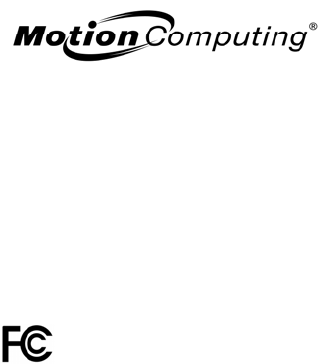User's Manual

English 6
Regulatory and Safety Compliance
The following sections describe regulatory and safety compliance by country and by region.
NOTE: To determine what regulatory and safety marks apply to a specific product, component, or accessory, check the product
label affixed to the product or its component.
Federal Communications Commission Notice (United States)
Electromagnetic Interference (EMI) is any electromagnetic disturbance that interrupts, obstructs, or otherwise
degrades or limits the effective performance of electronics or electrical equipment. These emissions can
potentially disrupt, degrade, or otherwise interfere with authorized electronic emissions, which may include
television, AM/FM broadcasts, cellular services, radar, air-traffic control, and pagers.
The FCC Rules and Regulations have established Radio Frequency (RF) emission limits to provide an interference-free
RF spectrum. Many electronic devices, including computers, generate RF energy incidental to their intended function
and are, therefore, covered by these rules.
Your Motion Tablet PC system, Motion FlexDock, Hardtop Keyboard, and all accessories have been designed and
found to meet the regulatory agency limits for Electromagnetic Compatibility (EMC). EMC is the ability of electronic
devices, including computers, to function properly together in the electronic environment. However, there is no
guarantee that in a specific installation it will not cause interference. Should this equipment cause harmful interference
to radio or television reception, which can be determined by turning the equipment off and on, you are encouraged to
try to correct the interference by one or more of the following measures:
■ Reorient the receiving antenna.
■ Relocate the Tablet PC and the receiver.
■ Separate the Tablet PC and the receiver.
■ Plug the Tablet PC and receiver into different circuits.
You may also need to contact a radio/television technician for assistance.
Unintentional Emitter per FCC Part 15
The rating label on Motion Tablet PCs, FlexDock, Hardtop Keyboard, and all accessories show which class (A or B)
these devices fall into. Class B devices have an FCC logo (shown here) or FCC ID on the label. Class A devices do not
have an FCC ID on the label. Once you determine the class of the device, refer to the following corresponding
statement and to the FCC notices in this Safety and Regulatory Guide.
■ Class A is for business or industrial environments.
■ Class B is for residential environments.
This device complies with Part 15 of the Federal Communications Commission (FCC) Rules. Operation is subject to
the following two conditions:
■ This device may not cause harmful interference.
■ This device must accept any interference received, including interference that may cause undesired operation.
Class A Equipment: This equipment has been tested and found to comply with the limits for a Class A digital device,
pursuant to part 15 of the FCC Rules. These limits are designed to provide reasonable protection against harmful
interference when the equipment is operated in a residential environment. This equipment generates, uses, and can
radiate radio frequency energy and, if not installed and used in accordance with the manufacturer’s instruction manual,
may cause interference with radio communications. Operation of this equipment in a residential area is likely to cause
harmful interference, in which case you will be required to correct the interference at your own expense.
Class B Equipment: This equipment has been tested and found to comply with the limits for a Class B digital device,
pursuant to part 15 of the FCC Rules. These limits are designed to provide reasonable protection against harmful
interference when the equipment is operated in a residential environment. This equipment generates, uses, and can
radiate radio frequency energy and, if not installed and used in accordance with the manufacturer’s instruction manual,
may cause interference with radio communications. However, there is no guarantee that interference will not occur in a
particular installation. If this equipment does cause harmful interference to radio or television reception, which can be
determined by turning the equipment off and on, you are encouraged to try to correct the interference by one or more of
the following measures:










